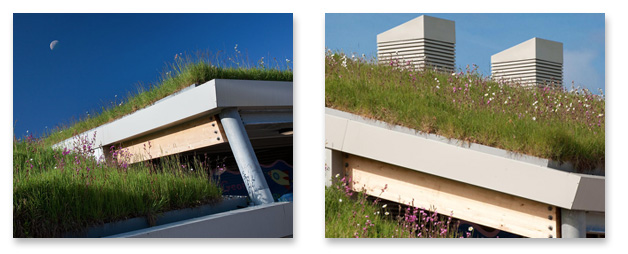Sustainable garden design has become a very popular trend within the garden design sector.
The environment provides us with many elements we perhaps take for granted. Natural resources which are both renewable and non-renewable. How about the air we breath? It also purifies water, and provides us with a biodiverse environment, all of which provide natural capital wealth. These aspects directly provide us with a healthy quality of life through tranquility, recreation, wildlife and clean water and air. A decrease in the capital wealth leads to poor environments thus poor health, more stress and even an increase in poverty.
The key to a sustainable design would be the elimination of negative environmental impacts. Economic growth doesn’t have to involve greater consumption of natural resources such as raw materials and land. With better technology and education there is potential to enable a higher output, using the same amount of resources. This would mean for example that energy is provided by renewable sources. On a simple level this could be as basic as making your own compost and collecting rainwater for use on the plants in your garden.
When you start to research the word sustainability, it becomes apparent that it can be really confusing, not only can it be ambiguous, but it can also feel incredibly overwhelming to the garden designer or landscaper. Presumably the question most designers would be asking themselves is how many ‘sustainable features/elements’ are sufficient for one to be able to warrant the label ‘sustainable’?
Creating an environmentally friendly or sustainable landscape does require detailed planning in order to achieve an effective layout. Close attention to aspects such as drainage and the integration of more vegetation, along with fewer hard-landscaped features (which reduce the need for materials), will channel the design instantly in the right direction. Where hard-landscaping materials are necessary, such as paths and drives – a requirement for most outdoor spaces, try to choose untreated materials that do not depend on natural resources for manufacturing, and source as locally as possible.
A few practical examples might be: Try thinking about the materials you could use which are porous, such as crushed brick, mulch, or gravel. All of these materials encourage drainage rather than hinder it. Additionally these materials could be reclaimed/recycled so you are not taking resources but rather re-using them. Is a wall or fence necessary? If its function is to divide up the site, then look at using shrubbery and hedges as an alternative. If a wall or fence is absolutely necessary look at incorporating plants at its base or even a green wall system?
Furnishings and accessories made of local, sustainable wood are not only popular but will look individual, which will add more of an impact to the design, and most likely make the client feel ‘individual and unique’ because their neighbours are unlikely to have the same products!
A few planting techniques to consider would be to include trees which will offer shade to buildings from the sun or protect them from wind. The plants and trees you choose should reflect the overall theme of your design while also promoting sustainability. Create your planting plan to minimise the need for water by keeping plants with similar requirements close to one another.
Use locally grown native species, especially those which are suited to your location/soil type which will ensure that little maintenance and resources are required for them to flourish. Areas of the garden can also be allowed to grow wild to encourage bio-diversity, or even try to incorporate a wildflower meadow into the design, which will attract the pollinating insects, which will also pollinate any fruits or vegetables being grown in the garden. Organic vegetables are much healthier and also taste better than vegetables purchased from the supermarket, as they are free of pesticides and herbicides, therefore where possible try to work them into the design.
Some additional elements might include…
Xeriscaping – A term referring to the practise of selecting the right plant for the right place. It is quite a unique garden design style and quite a challenge to utilise solely native plants, but it is possible and particularly popular when dealing with sites that are prone to drought. A xeriscape landscape design uses less water than a typical planting design, and can still offer colour and form throughout the garden.

Green roofs – are perfect if space is a premium on the site, therefore they are especially popular in small outdoor spaces. It will collect wasted rainfall by supporting flowers, vegetables, and even trees on level rooftops.
Bioswales – A designed drainage ditch that has been planted up with wildflowers and mainly ornamental grasses. They are designed to take water away from buildings and also filter the fallen water. This assortment of plant life provides suitable habitats for wildlife.
Green walls – these can be either free-standing or just a section of a building, that can be partially or completely covered with vegetation. In some cases, soil or an inorganic growing medium is required to support the plant life.
To be 100% sustainable is a challenge to us all, however people are starting to realise that the environment has value not just through the resources it provides us with, but the value it provides us through recreation, tranquility and the wildlife/biodiversity associated with it. These elements make the prospect of sustainable garden design a commercial proposition for many garden designers and landscape architects. Even making a shift to being as sustainable as possible would surly make a difference, and alter the way we think and live our lives in the 21st century.